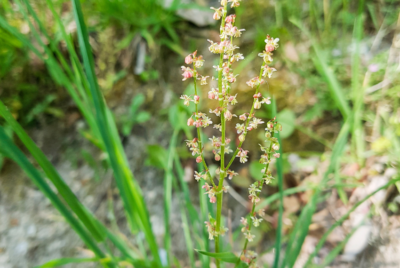Feverfew Benefits – The Miracle Herb
Most people are unaware of the amazing healing powers of feverfew, a herbaceous plant known for its anti-inflammatory and pain-relieving properties. This miracle herb has the potential to revolutionize the way we manage common ailments and reduce reliance on conventional medications. Discover the natural benefits of feverfew and why it might be the solution you’ve been looking for to replace your medicine cabinet.
Key Takeaways:
- Feverfew is a powerful herb: Feverfew has been used for centuries as a natural remedy for various health conditions.
- It can replace conventional medicine: Feverfew’s anti-inflammatory and pain-relieving properties make it a great alternative to over-the-counter medications.
- Effective for migraines: Feverfew has shown promising results in reducing the frequency and severity of migraines.
- It has other health benefits: Aside from migraines, feverfew can also help with arthritis, allergies, and skin conditions.
- Consult with a healthcare provider: Before incorporating feverfew into your healthcare routine, it’s important to consult with a healthcare provider to ensure it’s safe for you.

The Miraculous History of Feverfew
Ancient Greek and Roman Uses
To the ancient Greeks and Romans, Feverfew was a revered herb believed to have remarkable healing properties. Its name, Parthenium, is derived from the Greek word “parthenos,” meaning virgin, possibly due to the plant’s purity and healing abilities. Historically, Feverfew was used to treat a variety of ailments, including headaches, inflammation, and digestive issues.
Greek physicians even recommended Feverfew for its potential to alleviate pain and reduce fever. The herb was highly prized for its medicinal qualities and was thought to bring about miraculous healing effects for those who used it.
Medieval Europe and the “Medieval Aspirin”
Uses of Feverfew continued into Medieval Europe, where it gained a reputation as the “Medieval Aspirin” for its ability to alleviate headaches, joint pain, and fevers. The herb was commonly used by monks and herbalists to treat a wide range of maladies.
With the rise of the medical profession in the Middle Ages, Feverfew’s popularity grew even more, with physicians prescribing it for various conditions. Its effectiveness in treating common ailments solidified its place in the herbal medicine cabinet of the time.

The Science Behind Feverfew’s Healing Properties
Parthenolide: The Key Compound
It’s not magic, it’s science! The key compound responsible for feverfew’s incredible healing properties is parthenolide. This natural compound has been found to have anti-inflammatory, antioxidant, and pain-relieving effects that make feverfew a powerhouse herb for various health conditions.
Anti-Inflammatory and Antispasmodic Effects
Any health enthusiast would be fascinated to learn about feverfew’s anti-inflammatory and antispasmodic effects. Science has shown that feverfew can help reduce inflammation in the body, making it beneficial for conditions like arthritis and migraines. Its antispasmodic properties also make it useful for relieving muscle spasms and tension.
Anti-Inflammatory: The ability of feverfew to combat inflammation can be especially beneficial for individuals dealing with chronic pain conditions or inflammatory diseases. By reducing inflammation, feverfew can help alleviate pain and improve overall quality of life.
Pain Relief and Migraine Prevention
Any health-conscious individual seeking natural remedies for pain relief and migraine prevention should consider feverfew. Studies have shown that feverfew can help reduce the frequency and severity of migraines, making it a potential alternative to conventional medications. Additionally, its pain-relieving properties can make it useful for various types of pain, from headaches to menstrual cramps.
To fully harness the potential of feverfew for pain relief and migraine prevention, it’s important to consult with a healthcare provider to determine the appropriate dosage and usage. Always remember to seek professional advice before making any changes to your healthcare routine.

Feverfew’s Natural Remedies for Common Ailments
After discovering the incredible benefits of feverfew, you may be wondering how this miracle herb can help with common health issues. Look no further, as we explore into some of the natural remedies that feverfew offers for various ailments.
Headaches and Migraines
With its anti-inflammatory and vasodilatory properties, feverfew has been used for centuries to alleviate headaches and migraines. Studies have shown that feverfew may reduce the frequency and severity of these debilitating conditions, making it a natural alternative to traditional pain-relief medications. By inhibiting the release of serotonin and histamine, feverfew can help prevent the constriction of blood vessels in the brain, which is a common trigger for migraines.
Arthritis and Joint Pain
One of the most well-known benefits of feverfew is its ability to reduce inflammation, making it a valuable remedy for arthritis and joint pain. Feverfew contains compounds that inhibit the production of inflammatory markers, helping to alleviate discomfort and improve joint mobility. Individuals suffering from arthritis may find relief by incorporating feverfew into their daily regimen.
To further support joint health, consider combining feverfew with other anti-inflammatory herbs and supplements for maximum benefits. Always consult with a healthcare provider before adding new remedies to your arthritis management plan.
Digestive Issues and IBS
Joint discomfort and digestive issues can go hand in hand, and feverfew’s anti-inflammatory properties can offer relief for conditions like irritable bowel syndrome (IBS). Feverfew can help calm gastrointestinal spasms and reduce inflammation in the gut, potentially easing symptoms of bloating, cramping, and diarrhea. Incorporating feverfew into your daily routine may provide natural support for digestive health.
Another noteworthy benefit of feverfew is its potential to improve overall gut function by promoting a healthy microbial balance. By maintaining a diverse gut microbiota, feverfew may contribute to better digestion and absorption of nutrients, supporting overall well-being.

Feverfew’s Surprising Beauty and Skincare Benefits
Your skin is your body’s largest organ, and taking care of it is imperative for maintaining a youthful appearance and overall health. Anti-aging and skin toning are two crucial aspects of skincare that feverfew can help you with. This miracle herb is packed with antioxidants that fight free radicals, which can cause premature aging. Additionally, feverfew has astringent properties that can help tighten and tone your skin, giving you a more youthful and radiant complexion.
Acne and Inflammation Reduction
On top of its anti-aging benefits, feverfew can also help with common skin issues like acne and inflammation. Inflammation is often the root cause of skin conditions like acne, redness, and irritation. Feverfew contains compounds that have anti-inflammatory properties, helping to calm and soothe your skin. By reducing inflammation, feverfew can also aid in minimizing acne breakouts and promoting clearer skin.
Benefits of using feverfew for skincare go beyond just treating existing skin issues. By incorporating this herb into your beauty routine, you can prevent future breakouts, reduce redness, and improve overall skin health. Its natural properties make it a gentle yet effective solution for various skincare concerns.
Hair and Scalp Health
Health isn’t just about skincare – it also includes caring for your hair and scalp. Feverfew can be beneficial in promoting a healthy scalp and strong, luscious hair. Its anti-inflammatory properties can help alleviate conditions like dandruff and itchiness, while its antioxidant content nourishes the hair follicles and promotes healthy growth.
A growing number of people are turning to natural remedies like feverfew to address their beauty and skincare needs. With its range of benefits for the skin, hair, and scalp, feverfew is indeed a miracle herb that could replace many of the products in your medicine cabinet.

How to Use Feverfew for Maximum Benefit
Tea, Tincture, or Capsule: Choosing the Right Form
Many individuals may wonder about the best way to consume feverfew to reap its benefits. The herb is versatile and can be used in various forms such as tea, tincture, or capsule. The choice of form depends on personal preference and the desired effect. Tea is a soothing option for those who enjoy a warm beverage, while tinctures offer a concentrated dose for quick absorption. Capsules are convenient for on-the-go consumption.
Dosage and Preparation Guidelines
With feverfew, it’s imperative to follow the correct dosage and preparation guidelines to ensure safety and efficacy. The recommended dosage varies depending on the form of feverfew used and the individual’s health condition. It is advisable to start with a lower dosage and gradually increase as needed. Always consult a healthcare provider before incorporating feverfew into the daily regimen.
Understanding the proper dosage and preparation methods is crucial. Taking too much feverfew can lead to adverse effects such as mouth ulcers and digestive issues. It’s important to be mindful of the quality of the herb and follow recommended guidelines for optimal results.
Combining Feverfew with Other Herbs
Feverfew can be combined with other herbs to enhance its therapeutic effects. Feverfew is commonly paired with ginger for its anti-inflammatory properties and with chamomile for added relaxation benefits. Combining herbs can create synergistic effects that amplify the overall health benefits of the formula.
Tincture formulas may contain multiple herbs that work together to target specific health concerns. It’s important to read the labels carefully and consult a healthcare provider to ensure the safety and efficacy of combining feverfew with other herbs.

Feverfew Tea Recipe
Ingredients:
- 1 tablespoon dried feverfew leaves
- 1 cup boiling water
- Honey or lemon (optional)
Instructions:
- Boil Water: Bring 1 cup of water to a boil.
- Steep: Place the dried feverfew leaves in a tea infuser or teapot.
- Pour: Pour the boiling water over the feverfew leaves.
- Steep: Let it steep for 5-10 minutes, depending on desired strength.
- Strain: Remove the leaves and pour the tea into a cup.
- Flavor (Optional): Add honey or lemon to taste.
Enjoy your herbal brew! Always consult a healthcare professional before using herbal remedies, especially if pregnant or on medication.
Feverfew Infused Oil
Ingredients:
- 1 cup fresh feverfew leaves (or 1/2 cup dried)
- 1 cup carrier oil (such as olive or almond)
Instructions:
- Prepare Leaves: If using fresh leaves, gently wash and dry them thoroughly.
- Combine: Place the feverfew leaves in a clean, dry glass jar.
- Add Oil: Pour the carrier oil over the leaves, ensuring they are completely submerged.
- Infuse: Seal the jar and place it in a sunny spot for 2-3 weeks. Shake occasionally.
- Strain: After infusion, strain the oil through a fine mesh or cheesecloth into a clean container.
- Store: Store in a cool, dark place.
Uses: Apply topically for soothing benefits. Always conduct a patch test before widespread use.
Feverfew Herbal Tea Blend
Ingredients:
- 1 teaspoon dried feverfew leaves
- 1 teaspoon dried chamomile flowers
- 1 teaspoon dried mint leaves
- 1 cup boiling water
- Honey (optional)
Instructions:
- Mix Herbs: Combine feverfew, chamomile, and mint in a tea infuser or teapot.
- Boil Water: Bring 1 cup of water to a boil.
- Pour and Steep: Pour boiling water over the herb mixture.
- Steep: Let it steep for 5-7 minutes.
- Strain: Remove the infuser or strain the tea into a cup.
- Sweeten: Add honey if desired.
Enjoy your soothing herbal tea blend! Always use herbs in moderation.
Feverfew Salad Dressing
Ingredients:
- 1 teaspoon finely chopped fresh feverfew leaves
- 1/4 cup olive oil
- 2 tablespoons apple cider vinegar
- 1 teaspoon honey
- Salt and pepper to taste
Instructions:
- Combine Ingredients: In a small bowl, whisk together the olive oil, vinegar, honey, salt, and pepper.
- Add Feverfew: Stir in the chopped feverfew leaves.
- Mix: Whisk until well combined.
- Serve: Drizzle over your favorite salad.
Enjoy this unique dressing! Use feverfew in moderation and consult a healthcare provider if needed.
Potential Interactions and Contraindications
Medication Interactions and Side Effects
Unlike many prescription medications, feverfew is generally well-tolerated by most individuals. However, it’s necessary to be aware of potential interactions with certain medications. Feverfew may interact with blood thinners like warfarin, increasing the risk of bleeding. Additionally, it could affect the metabolism of some drugs processed through the liver.
Pregnancy, Breastfeeding, and Pediatric Use
An important caution to consider is the use of feverfew during pregnancy and breastfeeding. While this herb is generally safe for most people, there is limited research on its effects during these critical times. It is always best to consult a healthcare provider before introducing any new supplements to your regimen during these stages.
For instance, feverfew has shown potential to induce contractions, which could be dangerous during pregnancy. Therefore, pregnant women should avoid using feverfew to prevent any risks to themselves and their unborn child.
Allergic Reactions and Sensitivities
Breastfeeding mothers should exercise caution when considering feverfew. While there is limited research on its effects, some individuals may experience allergic reactions or sensitivities. Symptoms could range from mild skin rashes to more severe reactions. If you notice any adverse effects while using feverfew, discontinue use and consult a healthcare professional immediately.
A severe allergic reaction to feverfew could include symptoms such as difficulty breathing, swelling of the face or throat, and chest tightness. In such cases, seek emergency medical attention without delay to prevent any serious complications.

To wrap up
Presently, we have learned about the incredible benefits of feverfew and how it could potentially replace many medications in our medicine cabinets. From alleviating migraines to reducing inflammation and boosting the immune system, this miracle herb offers a natural and effective solution for various health issues. By incorporating feverfew into our daily lives, we can harness its healing properties and promote overall well-being. Consider giving this powerful herb a try and experience the positive impact it can have on your health.

FAQ
Q: What is Feverfew?
A: Feverfew is a medicinal herb known for its potential health benefits and has been used for centuries in natural medicine.
Q: What are the potential health benefits of Feverfew?
A: Feverfew is believed to help with migraines, arthritis, allergies, asthma, and other inflammatory conditions. It also has potential anti-inflammatory and anti-cancer properties.
Q: How do you use Feverfew?
A: Feverfew can be consumed in various forms such as capsules, tablets, liquid extracts, and teas. It is necessary to follow recommended dosages and consult with a healthcare provider before using Feverfew, especially for long-term use.
Q: Are there any potential side effects of Feverfew?
A: Some people may experience side effects such as mouth ulcers, digestive problems, and allergic reactions when using Feverfew. It is crucial to be aware of these potential side effects and discontinue use if any adverse reactions occur.
Q: Can Feverfew replace your medicine cabinet?
A: While Feverfew shows promise as a natural remedy for various health conditions, it is necessary to use it as a complementary approach alongside conventional medicine. Consult with a healthcare provider to determine if Feverfew is suitable for your specific health needs.
The Hidden Health Benefits of Tarragon
Coriander Your Digestive Aid and Anti-Inflammatory Superfood
Horehound Benefits of the forgotten Herb



